We’d like to remind Forumites to please avoid political debate on the Forum.
This is to keep it a safe and useful space for MoneySaving discussions. Threads that are – or become – political in nature may be removed in line with the Forum’s rules. Thank you for your understanding.
📨 Have you signed up to the Forum's new Email Digest yet? Get a selection of trending threads sent straight to your inbox daily, weekly or monthly!
Marks on new plaster wall
JustAnotherSaver
Posts: 6,709 Forumite






I was mist coating today & got some drips on the wall which i removed with a damp cloth.
One of the sections had the plaster dark on either side of a patch that wouldn't darken up when i wiped with a wet cloth...
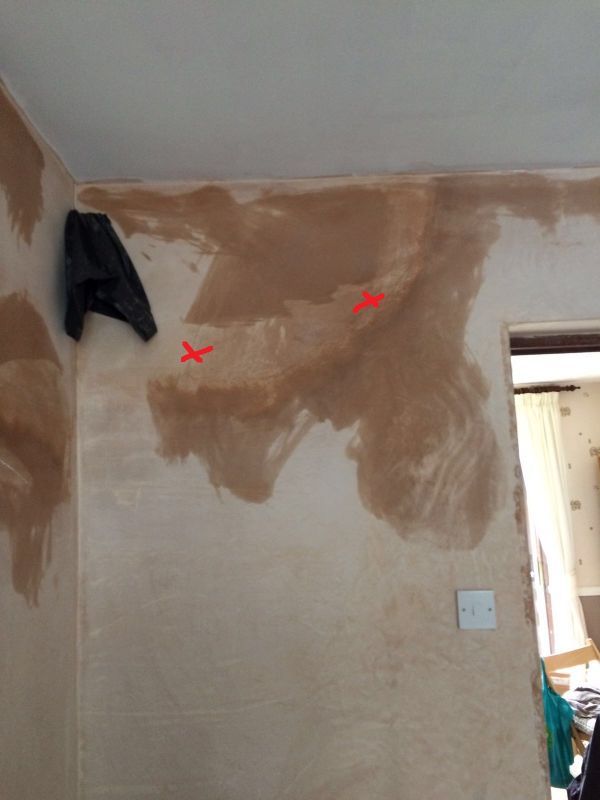
It was sticky to touch when i wiped with the cloth though.
I guess PVA?
Although there were cracks which i raked out & filled. Ok probably not the best of jobs but as it's my first time...
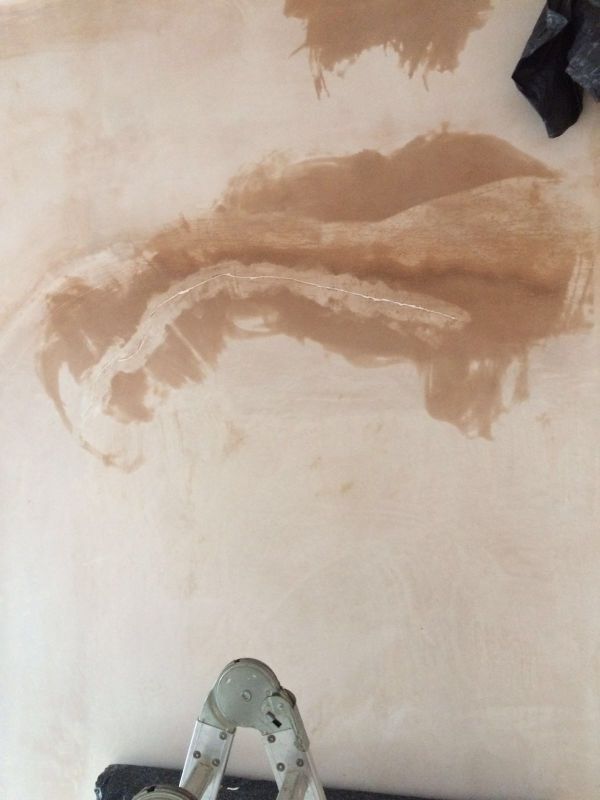
No PVA there but this had the same effect.
Since i'll be mist coating the wall at some point, i was wondering if these sections would need prepping in some way?
If the answer is sanding, at least for the filled section, then i've already sanded there prior to this.
Then i mist coated another wall.....
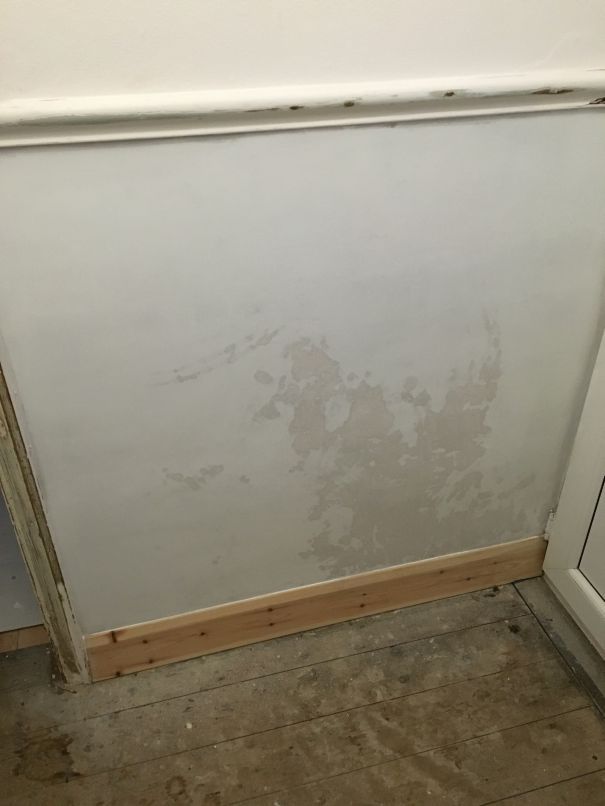
I was surprised to see that. I don't have a before photo but there was nothing about the wall that suggested that would happen. It was an even colour, it felt the same, so when that happened i was just surprised.
Any idea of why it's done that?
Ok it's only the 1st mist coat & subsequent coats may even it all out, but the way things have gone with this house i doubt it. Nothing is ever easy with this place.
That wall has actually been given the full K11 tanking system treatment. I know each stage was used because i took time off work & saw them doing it. The anti sulphate wash, the building up of the layers, the leaving the time in between stages. Like i said, beforehand there was nothing to suggest it'd go that way.
One of the sections had the plaster dark on either side of a patch that wouldn't darken up when i wiped with a wet cloth...

It was sticky to touch when i wiped with the cloth though.
I guess PVA?
Although there were cracks which i raked out & filled. Ok probably not the best of jobs but as it's my first time...

No PVA there but this had the same effect.
Since i'll be mist coating the wall at some point, i was wondering if these sections would need prepping in some way?
If the answer is sanding, at least for the filled section, then i've already sanded there prior to this.
Then i mist coated another wall.....

I was surprised to see that. I don't have a before photo but there was nothing about the wall that suggested that would happen. It was an even colour, it felt the same, so when that happened i was just surprised.
Any idea of why it's done that?
Ok it's only the 1st mist coat & subsequent coats may even it all out, but the way things have gone with this house i doubt it. Nothing is ever easy with this place.
That wall has actually been given the full K11 tanking system treatment. I know each stage was used because i took time off work & saw them doing it. The anti sulphate wash, the building up of the layers, the leaving the time in between stages. Like i said, beforehand there was nothing to suggest it'd go that way.
0
Comments
-
Looks like the wall has had filler applied in places. When you wet it, the plaster absorbs water quickly and goes a darker colour. Filler doesn't hence the patchy look. Should be OK after a coat or two of undiluted emulsion.For every complex problem there is an answer that is clear, simple and wrong.0
-
what are you painting it with?
what was the finish plaster used?
how long ago was it done?Mr Generous - Landlord for more than 10 years. Generous? - Possibly but sarcastic more likely.0 -
The second photo is filler because i did that myself. Makes sense to me now you've explained it.
The first photo though - the area i marked with the X is approximately where they blended in the new plaster (underneath the X) with the old plaster (X & above ish), so no filler really.
Plus the filler (2nd pic) - it's not sticky at all, whereas like i say in the first photo when i wet that section & touch the surface it's very sticky.
Also any idea for the final photo? You think it'd be fine after some undiluted coats?
I've been googling since posting this & reading threads of marks flashing through paint & people suggesting going with oil based undercoats or Zinsser BIN for these marks.0 -
Dulux Supermatt 1:1 Water:PaintMr.Generous wrote: »what are you painting it with?
A roller
Thistle Multi Finishwhat was the finish plaster used?
The final pic was all done & finished December 2015.how long ago was it done?
The other 2 photos depends because they've been blended in (although according to online feedback previously - blended in very badly apparently).
The lower sections were again finished in December 2015 whereas the older upper sections were finished February 2013 if i've got the year right. Actually i may be wrong there, it might've been 2014. Either 2013 or 2014.
EDIT: Just having a look at that 2nd photo, you guys possibly wont be able to see where it's been blended in without me editing the photo & showing you since i think it's at the upper level of the photo.
The 1st photo you can see the blending in marks i think. You can see a bit of the 2nd photo to the left of the 1st photo too.0 -
Could be PVA but the drips would normally be noticeable and should just peel off.
Could be patched of over-polished plaster that is causing the paint to slip and not adhere properly. I would advise lightly sanding these areas to give a slight key and then re-coating.0 -
Are we talking about the final picture there (with the overpolished plaster not allowing the paint to adhere properly)? Sorry - with asking so many things i've made the thread kind of confusing i suppose.TheCyclingProgrammer wrote: »Could be PVA but the drips would normally be noticeable and should just peel off.
Could be patched of over-polished plaster that is causing the paint to slip and not adhere properly. I would advise lightly sanding these areas to give a slight key and then re-coating.
What sort of grit sandpaper are we talking here?0 -
Hard to say really, wonder if the stickiness is from old wallpaper paste perhaps? Does it come off with a bit of scrubbing? As for the last pic, why not just try painting a bit and see if it covers ok?For every complex problem there is an answer that is clear, simple and wrong.0
-
It's most certainly not wallpaper paste since no wallpaper has been put to this plaster. They've been bare since they were plastered.
Don't worry, i know you were just throwing a suggestion out there. I'm just saying.
As for why i haven't just continued with the painting .... 1) I was waiting for the mist coat to dry & time was getting on a bit and 2) I'm in no rush - so i had time to come online to see if i should be doing something else as far as prep work goes - sanding for example.
Looks like we have splat marks showing through the ceilings first mist coat. Not sure what they are. I'd never noticed them before so they must be a result of the most recent plasterers visit...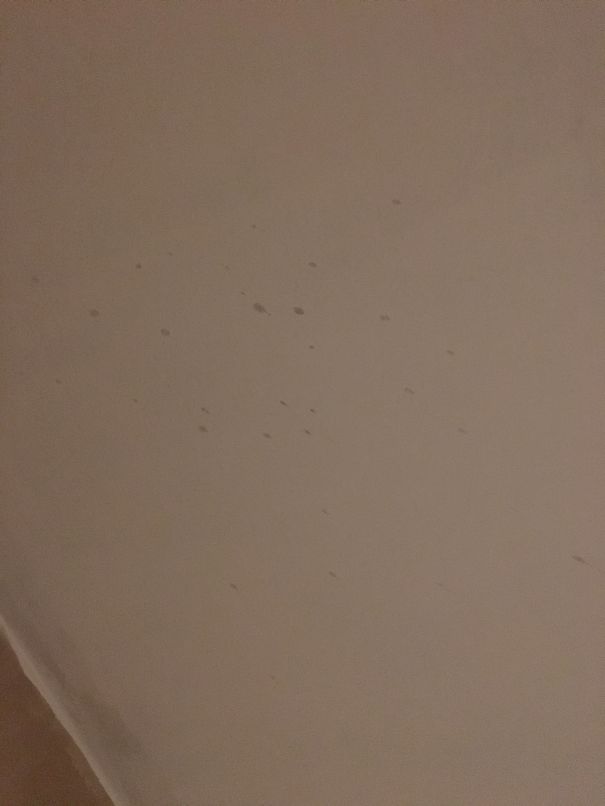
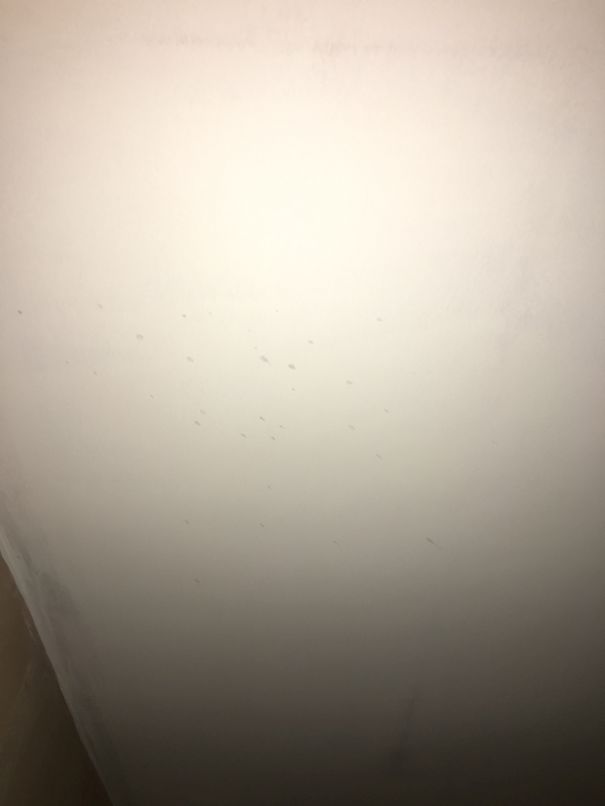
The marks in the lower section of the photo are where the plasterboards meet. I'm sure those marks will disappear with more paint. Not sure about the splat marks.
Oh and i forgot ... what grade grit sandpaper should i be using? I don't want to go too coarse but also not too fine to be doing nothing.
Same splat marks, just showing flash & non flash.0 -
Jesus
 Just sanding certain areas & then wiping down with a damp cloth & there's plenty of areas where the water doesn't result in dark plaster. It's still quite light.
Just sanding certain areas & then wiping down with a damp cloth & there's plenty of areas where the water doesn't result in dark plaster. It's still quite light.
HAve these guys been taking the piddle with polishing it up to a ridiculous degree?!
I've had 3 different plasterers in total out to the house too.0 -
I used 120 grit and just let the weight of the sanding block do the work, no real pressure. You don't want to damage the plaster surface.0
This discussion has been closed.
Confirm your email address to Create Threads and Reply

Categories
- All Categories
- 353.1K Banking & Borrowing
- 254K Reduce Debt & Boost Income
- 454.8K Spending & Discounts
- 246.1K Work, Benefits & Business
- 602.3K Mortgages, Homes & Bills
- 177.8K Life & Family
- 260.1K Travel & Transport
- 1.5M Hobbies & Leisure
- 16K Discuss & Feedback
- 37.7K Read-Only Boards

